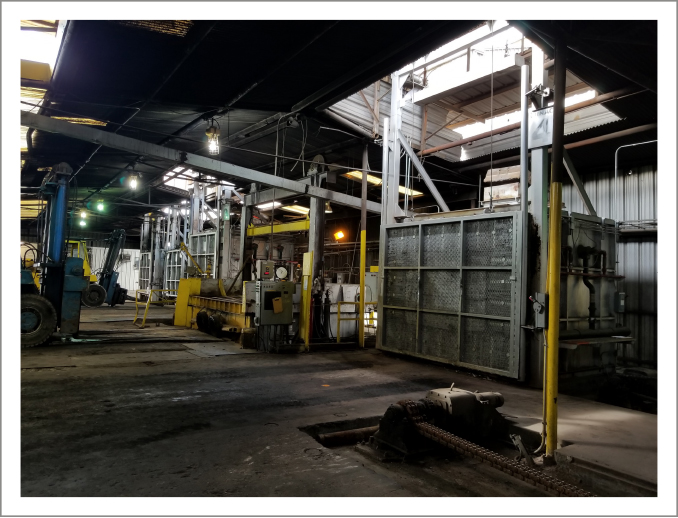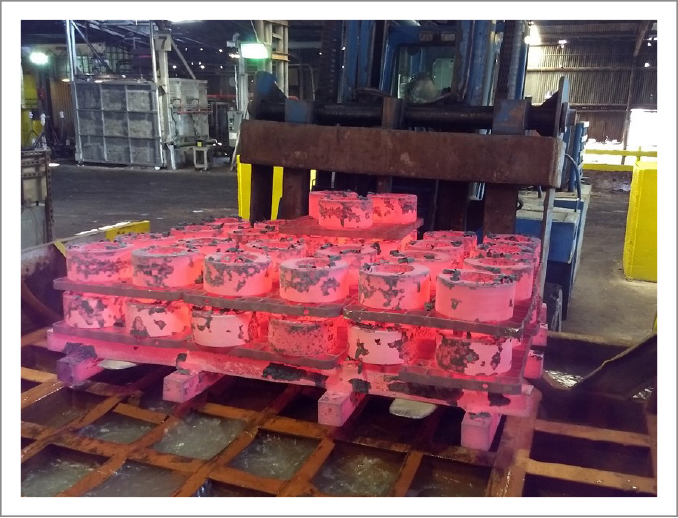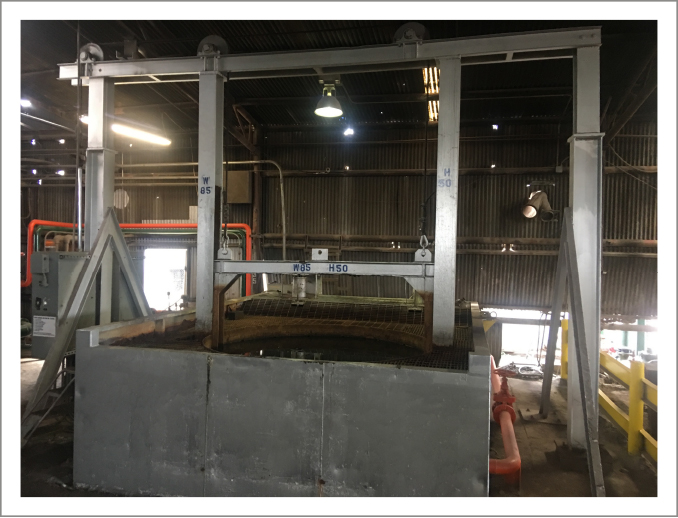Heat Treating Forged Products
Our Processes Are:
- Normalizing
- Quenching
- Tempering
- Annealing
- Solution Annealing
- Stress Relieving
Heat Treating Forged Flanges & Pressure Vessels
In the manufacturing of our forged flanges and pressure vessels, heat treating plays a crucial role in shaping and improving the properties of the metal. This is an overview of Forged Components process.
Normalizing
Normalizing is a heat treatment process to refine the structure of a metal to enhance its mechanical properties, and relieve internal stresses. This involves heating the metal to a temperature typically above its critical transformation point, holding it at this temperature to achieve a uniform structure, and then cooling it in air. This cooling process is faster than annealing, which involves slower cooling, resulting in a finer and more uniform grain structure. Normalizing improves the toughness, ductility, and strength of the metal, making it more suitable for subsequent machining and forming processes.
Quenching
Quenching is applied where the metal is rapidly cooled from a high temperature to set its microstructure and achieve desired mechanical properties, such as increased hardness and strength. The process begins by heating the metal to a temperature above its critical point, ensuring a uniform austenitic phase. It is then quickly immersed in a quenching medium like water, oil, or brine, which cools it rapidly to transform the austenite into a harder, more brittle martensitic structure. The rate of cooling and the medium used can significantly influence the final properties of the metal.
Tempering & Annealing
Tempering and annealing are both heat treatment processes used to alter the physical and mechanical properties of metals, but they serve different purposes and involve distinct procedures. Tempering follows quenching and involves reheating the quenched metal to a lower temperature, typically between 150°C and 700°C, then cooling it in air. This process reduces brittleness while maintaining a significant degree of hardness, resulting in a tougher, more ductile material. In contrast, annealing involves heating the metal to a temperature above its recrystallization point, holding it at this temperature to relieve internal stresses and promote a uniform grain structure, and then cooling it slowly, usually in a furnace. Annealing improves ductility, reduces hardness, and enhances machinability, making it ideal for metals that require extensive forming or machining. Both processes are crucial in tailoring the properties of metals for specific applications, ensuring the right balance between strength, hardness, and ductility.
Benefits of Stress Relieving
Stress relieving is a forged flange or pressure vessel is used to reduce residual stresses in metals that result from manufacturing processes such as welding, machining, casting, or cold working. The metal is heated to a temperature below its critical transformation point, typically between 500°C and 700°C, and held at this temperature for a sufficient period to allow internal stresses to be alleviated by slowly cooling. This process does not significantly alter the metal's microstructure or mechanical properties, but it greatly improves dimensional stability, reduces the risk of distortion or cracking, and enhances the overall performance and longevity of the metal component.
FCI Understands the Heat Treating Process
As an industry leading forging metal manufacturer, FCI understands the heat treating process is not just important; it is essential. It impacts every aspect of our production scope, from ensuring material properties and quality assurance to meeting industry standards and optimizing processes.
We are constantly looking to innovate and work diligently to maintain our customer’s trust. As such, a deep knowledge of heat treatment processes is fundamental to the success and competitiveness of a forging metal manufacturer.
Equipment
Furnaces
Nine (9) API certified box furnaces and Two (2) car bottom furnaces with load zones ranging in size from 60” x 60” x 58” to 100” x 140” x 50”
Capacity
300,000 lbs. of heat treating capacity

Quench Tanks
Water & Polymer Quench Tanks
Capacity
30,000 gallons for Water Quenching
16,000 gallons for Polymer Quenching
Highlights
- Large water and polymer quenching systems handling a variety of configurations and sizes
- Reversible polars (pulling-pushing) to support even cooling
- Calibrated regularly


